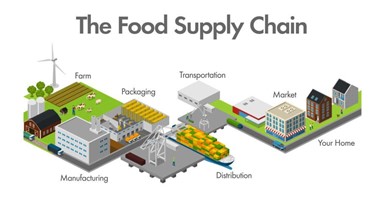Considering applying for one of the Caribbean Export Development Agency’s (Caribbean Export’s) grants programs but don’t know how best to utilise the funding to expand and grow your businesses?
Well, we are here to help! We will give you four top projects any business can implement through Caribbean Export’s grant funding.
Caribbean Export is the only trade and development agency in the region with the mandate to support Caribbean businesses in achieving their export potential. One critical pilar to becoming export ready is financial capital. Financial resources have been a major challenge for most regional businesses, resulting in low growth, limited scope, lack of diversification in products and limited access to markets. Caribbean Export over the years have launched various initiatives to provide businesses with much needed financial injection through its grants’ programmes.
Some of the best ways you can utilise the Agency’s grant funding facilities can be through the development of the following projects and actions:
Renewable Energy Projects
Sun, sea, and sand is what the region is known for, and what better way to take advantage of one of the three ‘S’ is by utilising Caribbean Export’s grants program to kick start your renewable energy project. Renewable energy is the use of non-traditional sources as a means of generating energy. The most common renewable energy sources are solar using photovoltaic panels or wind via turbines. The main benefit is the reduction in energy cost. Most businesses site the high upfront cost of such projects, but with a grant from Caribbean Export, companies can now make that bold step into the future of green energy.
Certifications
To export to international markets, regional companies must ensure they meet specific standards, regulations, and that their products and operations are internationally certified. According to the International Standard Organisation (2021) “standards are the distilled wisdom of people with the expertise in their subject matter who know the needs of the organisations they represent – people such as manufacturers, sellers, buyers, consumers, trade associations, user or regulators”. Standards cover quality, safety, sanitary practices, and best practices of business operations. They keep consumers safe and provide guidelines to businesses.
Through a Caribbean Export grant, your business can start the process of becoming certified. Our funding facility provides firms with the opportunity to critical assess operations and products, acquire consultation and training from experts, develop a plan and initiate change towards the goal of certification.
Website Development
One thing that the COVID-19 pandemic has shown us, other than the importance of washing your hands, is the importance of utilising ICT tools in reaching your target market and beyond. With multiple lock downs, restrictions on movement and social distancing protocols customers have moved away from in store purchases to online shopping. The demand for online access to goods and services has sharply increased. Many businesses were caught on the back foot as they rushed to create an online presence to facilitate customers during the pandemic. Although restrictions have been lifting, businesses have come to realise the critical nature of having an online presence. This is the new normal! A website coupled with a social media presence allows businesses to connect with their customer base, expand to new markets and reach new customers, reduce cost of market penetration, and reduce the cost of marketing.
It’s a win-win for all!
Grant funding can be used to create the web base and social media presence your business needs, especially in these challenging times. Caribbean Export can help you meet new customers and expand your export capacity by supporting your digital footprint.
Updating Equipment
Nothing says efficiency more than updating or purchasing new equipment with the latest technological advances to help your business produce more, with greater efficiency and higher levels of quality. There are many reasons and benefits derived from updating a company’s equipment.
- Changing business needs: The pandemic has caused businesses to reinvent themselves. Many companies have found new ways to incorporate new products into their current product lines or business portfolio because of changing business needs and customer demands.
- Increase efficiency and productivity: New equipment reduces processing time, offer automated solutions to manual processes, deliver greater productivity of staff which overall results in cost savings.
- Improve safety: Advances in technology provides greater safety mechanisms with every improvement. Manufacturers are constantly upgrading equipment based on the advice of its consumers on safety challenges encountered. This makes products easier to use, offer greater security in handling and reduces the risk of damages to both staff and plant.
Updated equipment keeps a business on the cutting edge and is a rewarding initiative. Caribbean Export through its grant funding programs provide beneficiaries with the capital assistance needed on such projects.
These four easy projects are sure ways in which Caribbean Export’s grant funding can assist your business in its development goals of increasing production capacity, diversifying your product portfolio and expanding into new markets.
Be sure to subscribe to our mailing list to ensure you receive the details of the next opportunity to apply for a grant.




